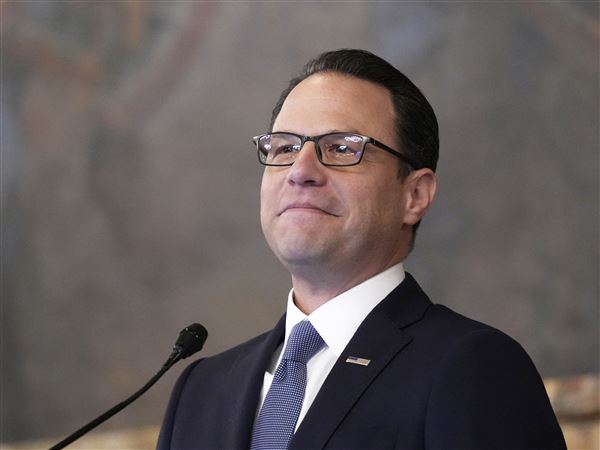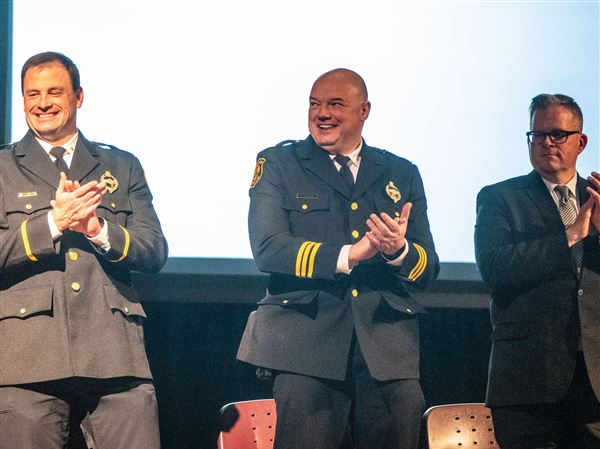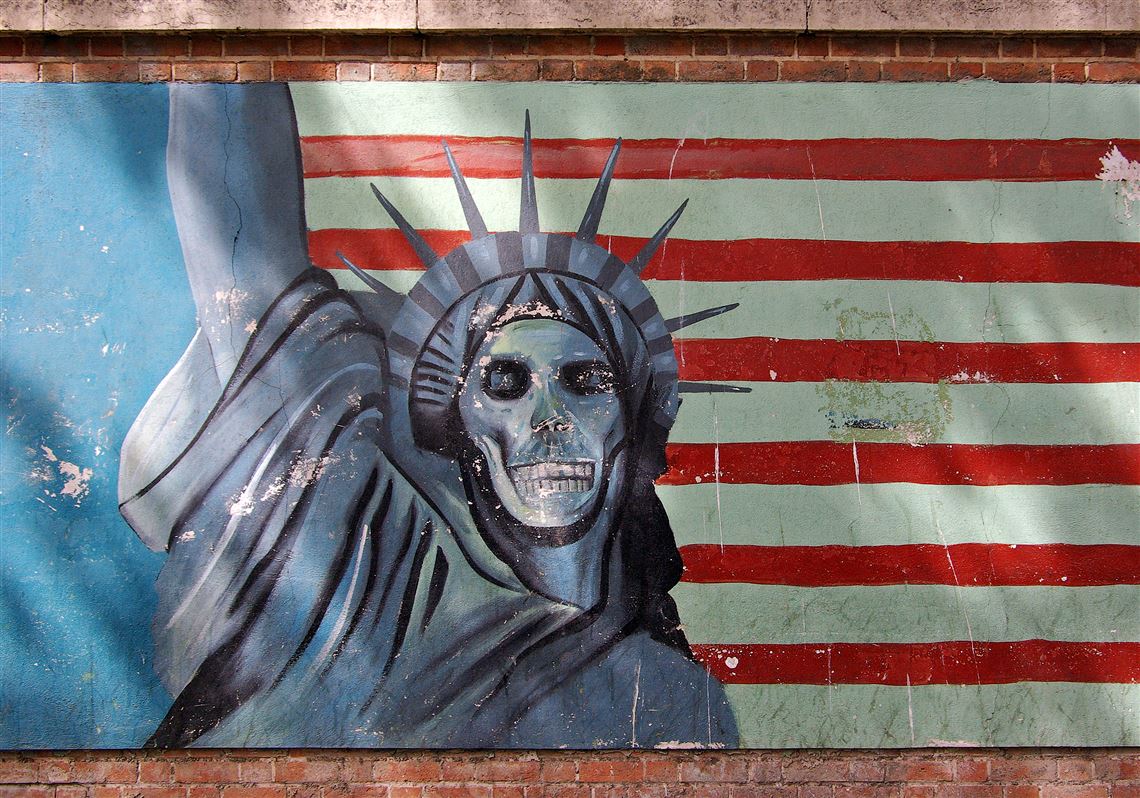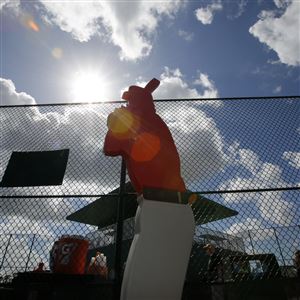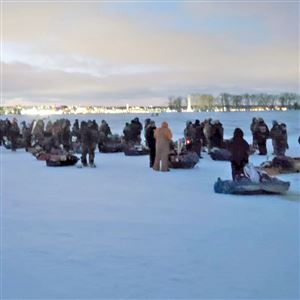TEHRAN, Iran
We don’t know why, but we were allowed to step foot into the former U.S. Embassy in Tehran, and our guide said we were the first American tourists to do so since 1979.
Like most Americans, the memory of that building is seared with images of demonstrating students storming the embassy, taking 66 people hostage — mostly Americans — and holding many of them for as long as 444 days. What happened there 36 years ago marked a definitive end to the U.S.-Iran relationship, as well as the end of one American presidency and the rise of another.
Many of us traveling together just hoped to ride past the embassy, but like much of our carefully watched itinerary, it was never quite certain whether even that would be “permitted.” And then, suddenly, on our last day in the country, we were told we would be given a tour. Not even our guide had been into the building, and he said that while a few American Muslim clerics had been inside at some point, we were the first group of American tourists.
Driving through the gates and entering the building, we started taking pictures, and no one asked permission and no one stopped us: images of the multi-sided domed structure that we later learned was the core of the old embassy radar system; the painting of a broken American flag on the driveway; the skeletal Statue of Liberty, and the former United States seal that is nothing more than a plain round disk over the door. Today, the building is used by the Revolutionary Guard and referred to as the Den of Espionage. It houses a “museum,” and we were about to be the first Americans to visit.
Our 38-year-old guide explained the reasons for the embassy takeover and carefully walked us through the building telling the official Iranian version of history. We were told that the first floor had been used for embassy-related activities and the second floor for CIA functions. As we climbed the stairway to the heart of the “museum experience,” a two-story cartoon of anti-American sentiment both fascinated and humored us. (A recurring theme represented in the cartoon was that of the Pentagon cooking the news.) Once on the second floor, we stepped back in time.
As we moved from room to room, we saw telex machines, Rolodexes with cards for the accounting firm Arthur Young and for Diners Club, a huge paper shredder, document-forging equipment and entire rooms of computers with capacity that today would fit on our cellphones.
There were enormous 6-inch-thick steel doors that we were told required triple identification before they would open and machines with NSA and other U.S. government labels. Photos provided context for the equipment and included Iranian propaganda about how well the hostages were cared for.
Everywhere were anti-American images, posters and artwork. There was a door mat with “Down with USA” printed in English and Farsi, numerous creepy images of the Statue of Liberty blowing up planes and looking like a corpse, a bronze relief that mimicked Michelangelo’s Sistine Chapel image of the creation of Adam with Uncle Sam creating a soldier on a dollar bill complete with a skull and Lady Liberty.
The most disturbing exhibit was four collaged missiles, with each depicting the core of what is wrong with America — the military, the culture, the money and the politicians — that are wired to an infant lying in a flaming blanket.
At the end of the lengthy tour, we were asked if we had any questions. For the first time in a week, not one of us felt it necessary to try to probe deeper.
Had the embassy visit been our first stop, rather than our last, we might have seen Iran and the Iranian people through a different lens, but the experience we had before entering that building made the story being told inside ring hollow.
“Hello, welcome. Where are you from? We love America.” These were the most common phrases I heard throughout our visit.
During our eight-day journey, we traveled from the ancient capital of Shiraz to the modern capital of Tehran. Along the way we met artists, students of all ages, young entrepreneurs creating an Internet economy and other technology industries, religious leaders — Christian, Jewish and a grand ayatollah — and everyday people playing, exercising and shopping. The cities buzzed with energy and modernism, particularly in Tehran where beautiful silk headscarves, tailored suits or jeans and fashionable shoes were as common as the dark and austere hijab.
One of the interesting surprises was the almost universal command of English. This enabled us to have personal conversations, to ask the hard questions and hear honest sentiments. To a person, we were met with warmth and appreciation for our visit. We even ran into a young man wearing a Pittsburgh Steelers jersey — No. 92, James Harrison.
Iran isn’t an open country and its government structure is complicated, its officials frightened of change, but, based on our experience, it isn’t a place where people hate America. Of the scores of people we interacted with, we didn’t meet anyone who agrees with the extreme language of the supreme leader, Ayatollah Ali Khamenei. As in America, they felt government leaders did not necessarily represent their views.
Instead, we found a people on the move even while they find themselves caught between hardliners stubbornly resisting change and a president eager to open the country’s economy. With more than 20 million cellphones, 15 million Facebook accounts and 65 percent Internet saturation, Iranians aren’t in the dark. They are proud of their culture and heritage and ready to take advantage of their innate potential if economic sanctions are lifted.
The story inside the embassy is as old and antiquated as the artifacts. The story outside seems to be one steeped in optimism, future thinking and a world of possibilities built on new relationships. Perhaps our invitation to visit provides a glimmer of hope that real change is in the air.
Cathy M. Weiss, a retired foundation executive, toured Iran in April under the auspices of the Peace Action Network of the Young Presidents’ Organization and World Presidents’ Organization. She wrote this for Scripps News.
First Published: May 10, 2015, 4:00 a.m.

